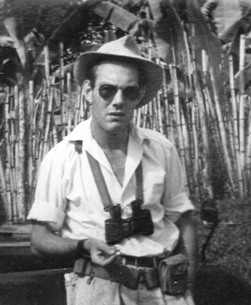
British geologist honoured for his contribution to Jamaica’s economic geology
John Williams CD was born in Britain on October 8, 1930. He gained his BSc (London) from Kingston Technical College, Kingston-on-Thames, but spent most of his life in Kingston, Jamaica. In 1953 he entered the British Overseas Geological Survey Service, being posted to Jamaica’s Geological Survey Department. Early assignments included mapping the Cretaceous rocks of the Central Inlier, last examined by the Sawkins survey of the 1860s. The 1:50,000 Jamaican topographical sheets of those days, while better than anything before, were hardly appropriate for detailed mapping. The 250-foot contour interval inhibited analysis of features over the steep, extensively faulted island topography. Aerial photos were in short supply and were not allowed to be taken into the field. Nevertheless, John did a sterling job of sorting out the main components of the inlier’s geology in the first two years of his tenure. Maps with adequate contouring became available only after 1968.
John became the department’s petrologist, involved with the assessment of industrial mineral deposits. He collaborated with the Director, Verners Zans, in a survey of the island’s coral reefs. In 1965 he was promoted Deputy Director, and became Director in 1968. With technical assistance from the British Geological Survey he helped to initiate publication of Geology map sheets at a 1:50,000 scale. He co-managed the UNDP-sponsored Ground Water programme and involved NASA in a multispectral aerial survey of the island. Leaving the Geological Survey in 1973 he became manager of the government’s Water Resources Division.
In the later 1970s John left the government and direct involvement with professional geology to work briefly with the bauxite industry, before returning to enter the Ministry of the Public Service. Then, after a short spell at the UK’s Commonwealth Office, he entered the Jamaica National Investment Company where he was able to use his managerial skills to promote development of Jamaica’s industrial and natural resources. Because Jamaica has no fossil fuel deposits, this involved investigations of alternative energy sources, including sizeable peat deposits with potential as a fuel resource.
The family spent two years in the island of St. Kitts before returning to Jamaica where John worked with Price Waterhouse, identifying potential executives for the company’s clients. On retirement in 2001 he was still on the board of Clarendon Alumina Production Ltd. John died in July 2014, following a short illness.
Apart from his professional career, John was the first secretary of the Geological Society of Jamaica, founded in 1955, and edited early volumes of the Society’s journal “Geonotes” (now the “Caribbean Journal of Earth Sciences”). He became the Society’s President and helped to secure funding for the Society’s student scholarship. He joined the Jamaica Defence Force as a reservist, and became increasingly involved with the military, rising to the rank of Major. For his services to Jamaica he received the National Honour of Commander of the Order of Distinction (CD). He is survived by his wife Regna, children Nicola and Phillip, and three grandchildren, Sabrina, Samantha and Nathanael.
By Ted Robinson